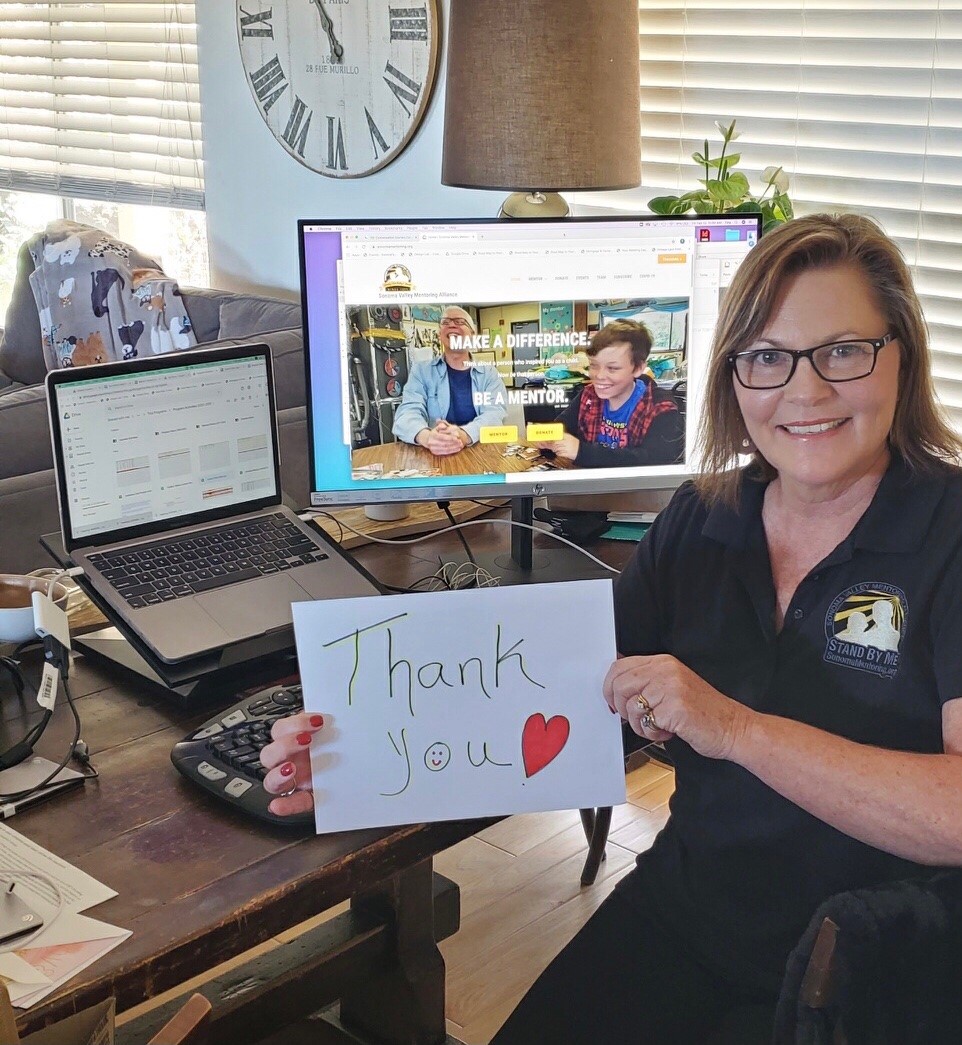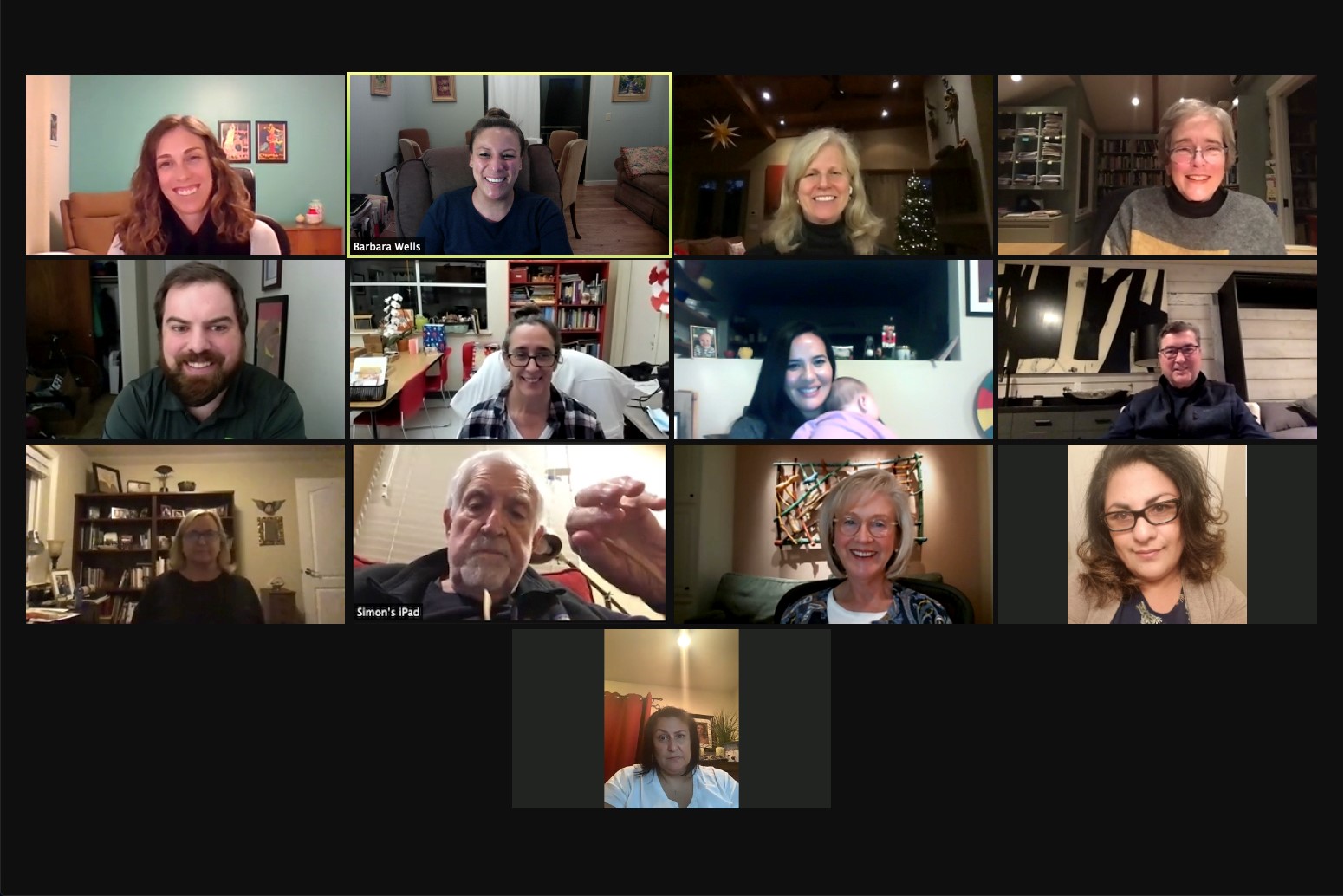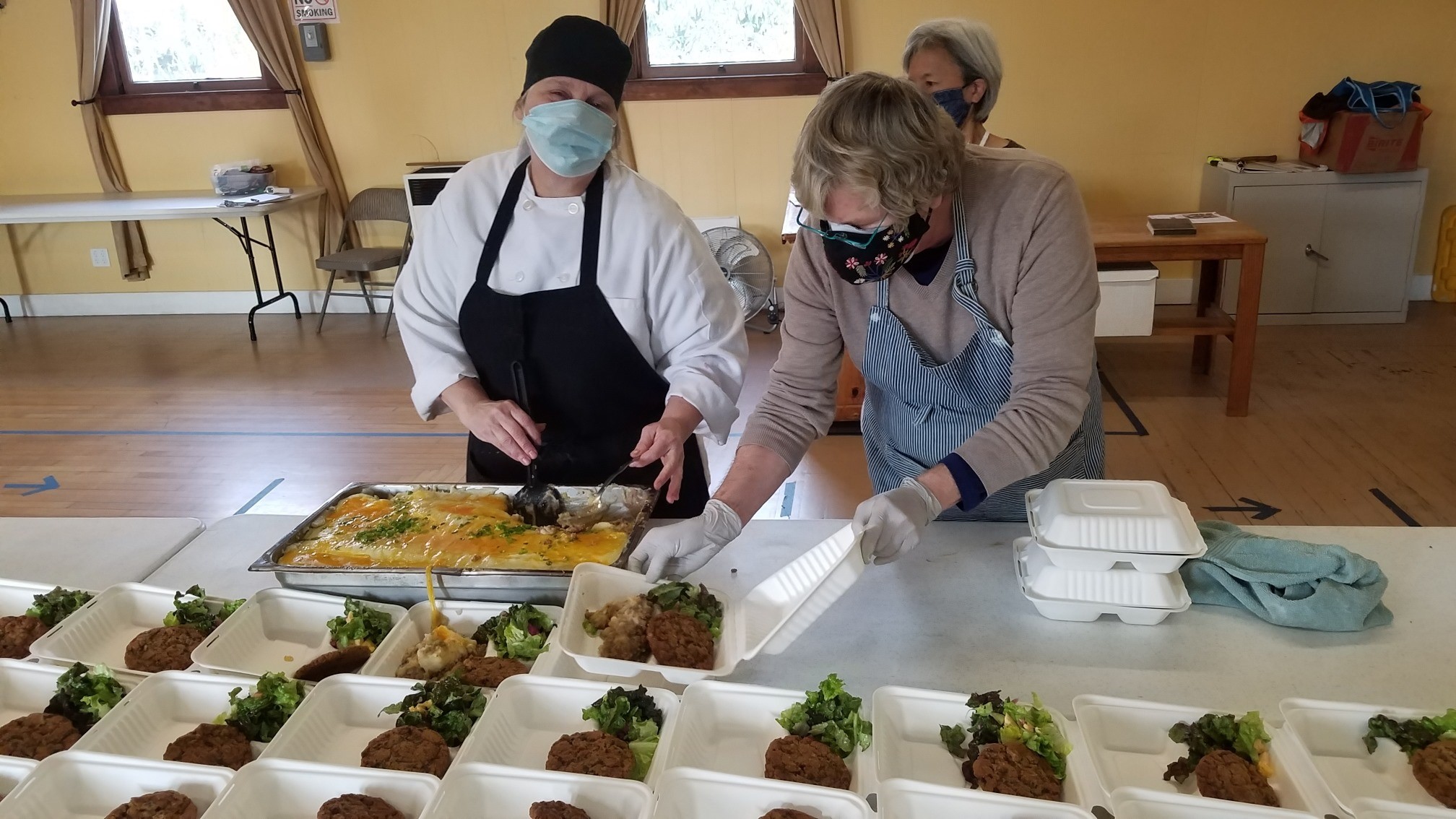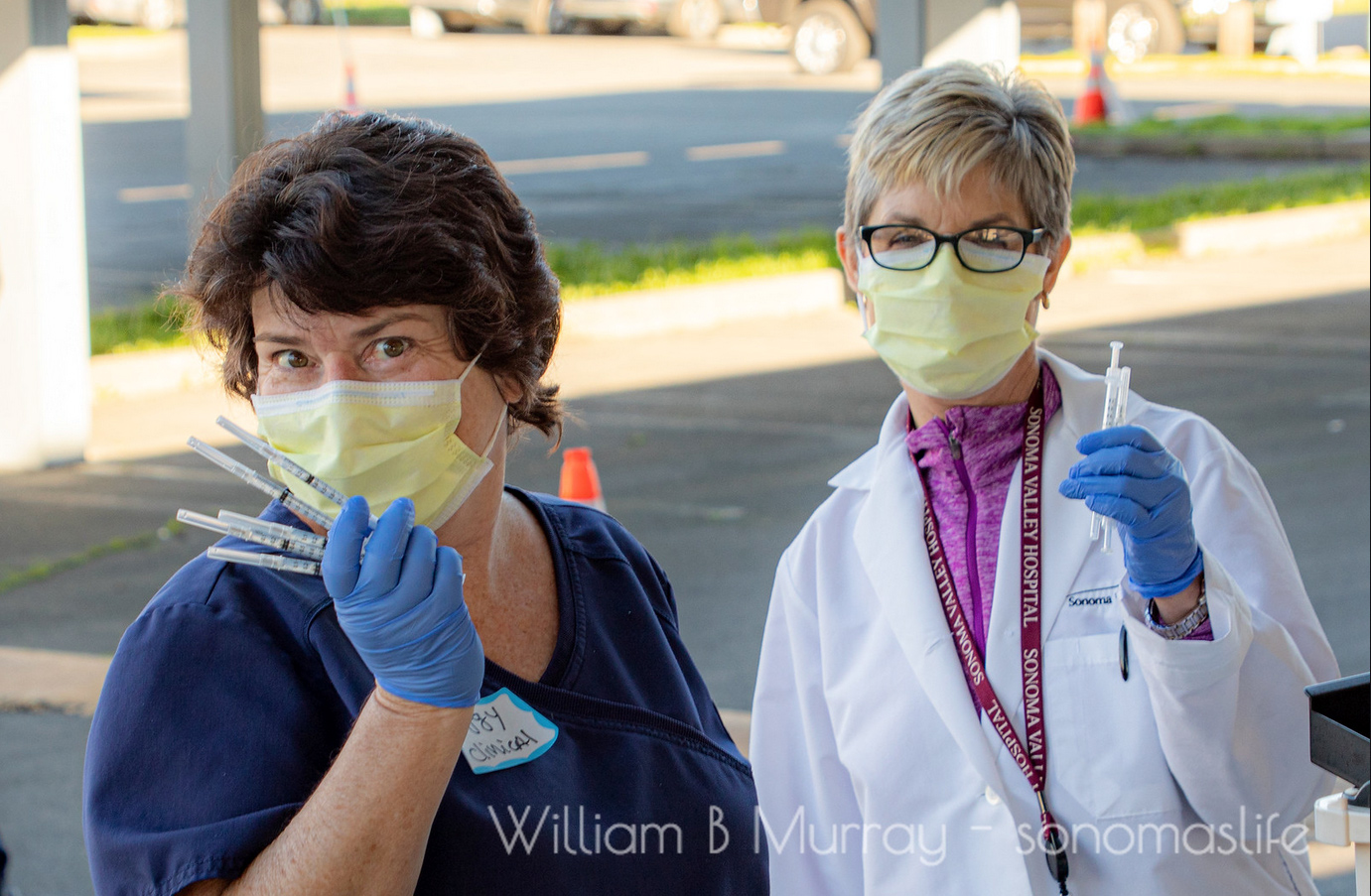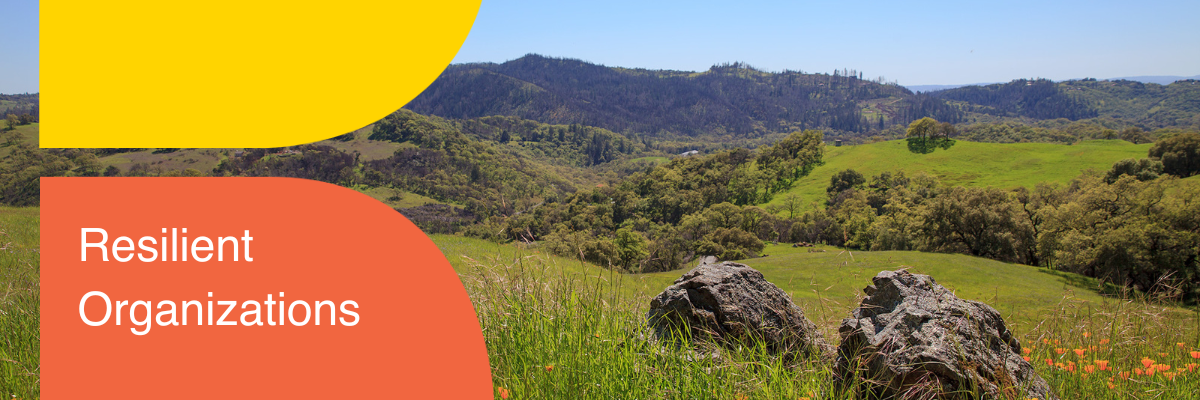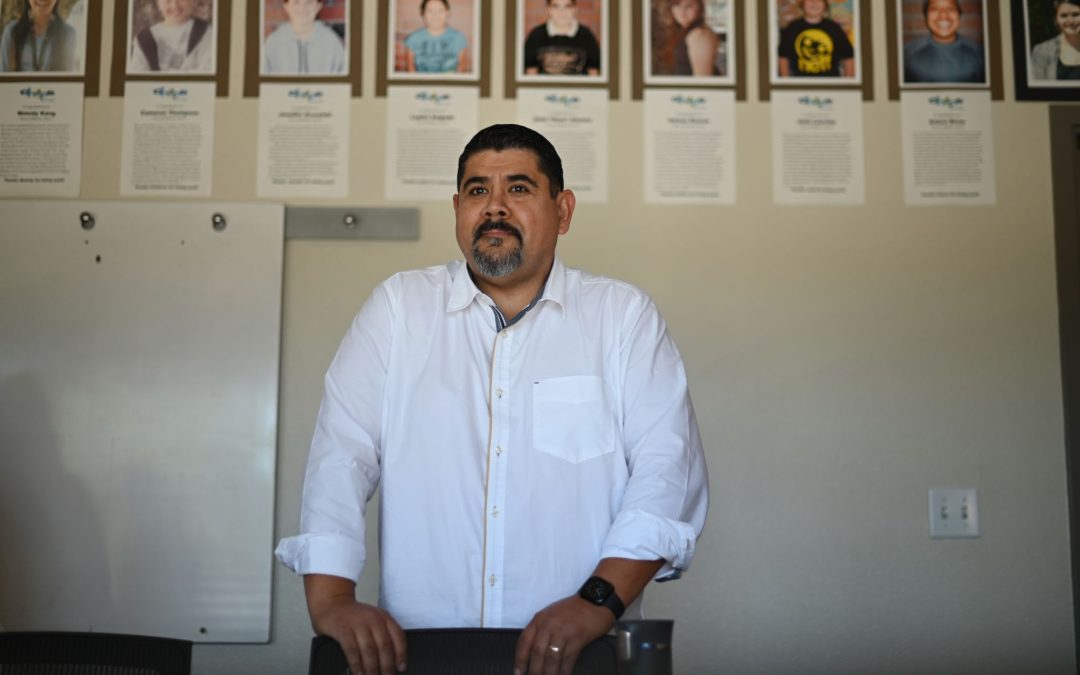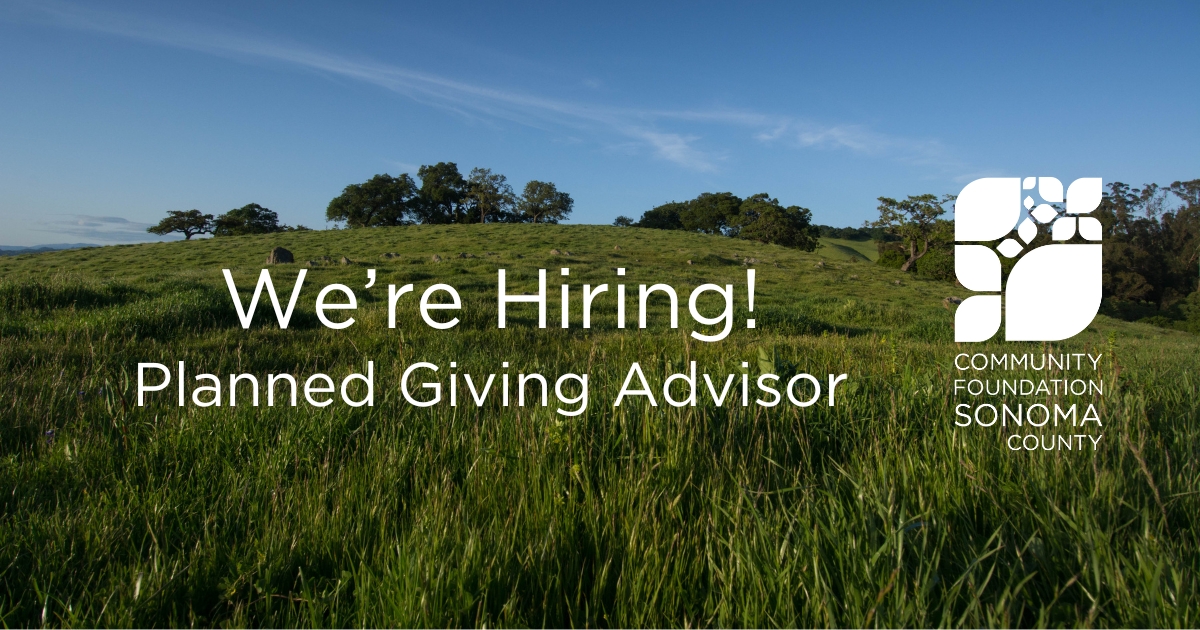In June 2020, about 10 Sonoma Valley civic leaders gathered in a backyard to discuss the future of Sonoma Valley. Roughly three months into the pandemic, the group was worried: How would small local businesses survive shelter-in-place orders? How would those who were now unemployed or under-employed make it through the coming months of uncertainty? How would those infected with Covid get the support they need?
- A screenshot of the Sonoma Valley Catalyst Fund volunteers meeting via Zoom
- A thank you from Sonoma Valley Mentoring Alliance, who received a grant for new laptops and training
- Sonoma Overnight Support received a grant for refrigeration units and worktables. The photo is them serving food at the Springs Hall
- Photo courtesy of William Murray and was taken during the Vaccine Clinic the Catalyst Fund helped sponsor at SVHS the weekend of 2/6 & 2/7
After some initial research, they decided to launch a temporary philanthropic fund to meet the urgent, growing needs. The new fund aimed to “catalyze” new efforts to address the pandemic, and it was designed to operate as a offshoot of the Sonoma Valley Fund, Community Foundation Sonoma County’s regional affiliate. Volunteer leaders were recruited from all major Valley philanthropic efforts, with a special emphasis on diverse representation from those closest to the needs.
In early September, the Community Foundation provided a $150,000 grant to help kickstart the Sonoma Valley Catalyst Fund’s efforts, providing an incentive to donors who would be asked to make matching gifts.
Barbara Wells, who has supported Catalyst Fund’s development and communication efforts, says that the community rose to meet the challenge. The match was quickly met, and grantmaking began in October.
“There was overwhelming support and curiosity and interest in the new way that Catalyst was going to approach granting,” says Wells. “And once we very quickly established our process, I think donors really resonated with our approach.”
Wells says that the target from the beginning was ensuring prospective donors that Catalyst Fund would do the work of identifying where the needs were in the community and then building trust in donors that they’d get the funds into the right helping hands.
One challenge of fundraising during a pandemic, when social distancing is critical to stop the spread of the deadly virus, is the barrier to meeting with donors face to face. Yet, video meetings hosted by the volunteer fundraisers behind the Catalyst Fund allowed for more frequent contact with donors and provided personal approaches to answering questions and following up to share how donated funds were used to help fight COVID in the community.
To date, the fund has granted out nearly $700,000 towards organizations fighting the impacts of COVID locally, with much more grantmaking planned to deal with the lingering impacts of the crisis. While the largest portion of grants from Sonoma Valley Catalyst Fund went to organizations supporting Sonoma Valley residents facing food insecurity, other grants were provided to organizations addressing health (such as vaccination clinics), financial assistance (including to businesses), education and youth services, housing, and civic support to keep the Sonoma Valley community connected.
“I would say the beginning was like triage; you’re just trying to stem the bleeding,” says Wells. “We’ve been trying to really step back and say: ‘What are some of the causes of people’s pain that we can address?’ Such as losing jobs, losing housing, as well as food issues, and education. A wide scope of things are looked at when we think about grants.”
Launching these fundraising efforts with the grant from the Community Foundation helped provide credibility to the process of soliciting donations for this new emergency fund.
“And on top of that, many of the people who were in the development committee and in the steering committee donated to us as well,” says Wells.
One member of the development committee who jumped in with a donation is Willard “Dub” Hay, the Catalyst Fund’s development co-chair. Hay and others on the fundraising team began contacting potential donors and discussing what the future of the Sonoma Valley will look like after the pandemic.
“We talked about getting those served who were falling through the cracks and that the nonprofits had cast a wide net across Sonoma Valley, but there are areas that they just don’t cover,” says Hay. “And that could be food insecurity; it could be the inability to pay rent or utility bills or lost jobs, you name it.”
Hay says that nearly every one of the 50-60 donors they approached were happy to give to the fund and that they shared his agenda: seeing the Sonoma Valley coming out as strong as it can after this pandemic.
As for him going the extra mile beyond soliciting donations and becoming a donor himself, he felt he should lead by example. And, beyond that, Hay knows the reality of surviving a disaster: he and his wife lost their Sonoma Valley home in the 2017 fires.
“We lived in it for three years; got out with about two minutes to live. We were running through fire—we lost everything,” says Hay. “We know what it’s like to have nothing. We’re fine now, and we’re not going to miss a meal, but there are those [during the pandemic] that will.”
Hay says he felt strongly about supporting issues of food insecurity specifically and gave the nod to Food For All Comida Para Todos, a bilingual organization that delivers food and other essentials to people living in The Springs area, many of whom contracted Covid-19.
He’s also happy to support those getting vaccines and vaccine information out to the community.
“Because until we get to that widespread levels of vaccination, this pandemic is going to keep going,” he says.
Ultimately, Hay hopes that the pandemic has helped nonprofits learn to work more closely together to keep the most vulnerable from slipping through the cracks in services.
“Whatever the next disaster is, they’re going to be much more organized because of this,” says Hay. “Because we’ve identified the gaps, and we’ve tried to put in solutions to those gaps that will allow the community to respond in a much more effective and lightning-fast way.”
Wells says that being a part of the Catalyst Fund team has helped herself and many others feel hopeful during a time when many have been stuck at home.
“In a community that has so many volunteers, you want to do something. I really felt like helping here would allow me to do something, be a part of something larger that was going to affect change in the community,” she says. “I feel pretty confident that that was a part of why so many people jumped on and joined us as well; they wanted to support an effort that was doing something.”
Hay agrees and says that supporting the Sonoma Valley community through the Catalyst Fund has been incredibly rewarding.
“This work is just so important. I can’t think of anything more important than it right now. And it’s probably the crisis of a lifetime,” he says. “And those that are underserved are the ones who are being impacted the most. You can sit back and watch it happen, or you can do something.”
Learn more about The Sonoma Valley Catalyst Fund and their grants by visiting their website.
Story by Dani Burlison, Photos courtesy of participating nonprofit organizations

